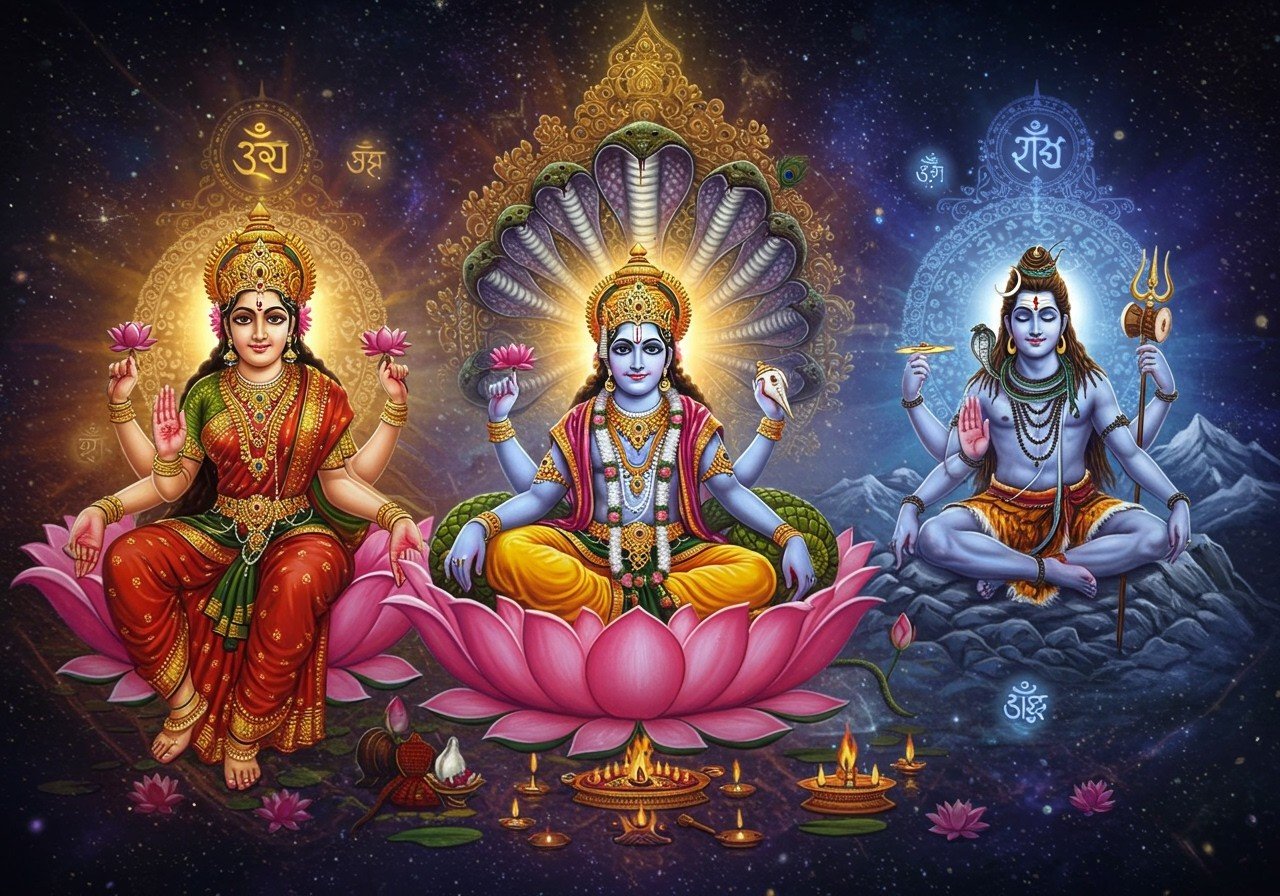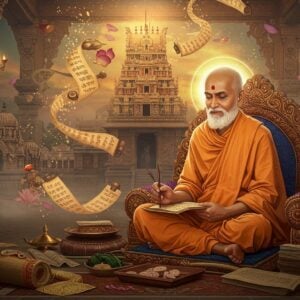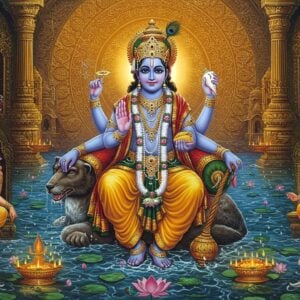
In the vibrant tapestry of Hindu spirituality, deities and their symbols hold profound significance, acting as gateways to understanding the divine. These representations aren’t merely idols; they embody powerful cosmic forces, philosophical concepts, and spiritual ideals that resonate deeply within the hearts of devotees. Each deity carries unique symbols, offering a glimpse into their nature and their role in the intricate dance of the cosmos.
Iconography in Hinduism: A Visual Language of Faith
Hindu iconography is more than just artistic representation; it’s a visual language that speaks volumes about religious ideas. It seamlessly weaves together mythology, spirituality, and cultural nuances to capture the very essence of the deities. From ancient temple architecture to intricate ritualistic practices, iconography plays a central role, conveying profound spiritual meanings through symbols, gestures, and attire. Understanding this visual language deepens our appreciation and connection with the divine.
This rich tradition has gracefully evolved across regions and sects over centuries, reflecting the diverse interpretations within Hinduism while preserving its core essence. Through these symbolic representations, believers connect with the divine on a deeper level, finding meaning and guidance in complex philosophical concepts.
Key Deities and Their Sacred Symbols
Let’s explore some of the prominent Hindu deities and their associated symbols, each representing a different facet of the divine:
- Adi Parashakti: The supreme goddess in Shaktism, depicted on a chariot pulled by seven majestic lions, symbolizing her unparalleled power and dominion. The Sri Chakra, a complex geometric design, represents the dynamic energy of the cosmos emanating from her.
- Brahma: The creator god, associated with the pristine lotus, a symbol of purity and creation arising from primordial waters. His swan (hamsa) embodies wisdom and discernment, while the Vedas and his akshamala (garland of beads) highlight his role as the fountainhead of knowledge and sacred scriptures.
- Vishnu: The preserver god, often depicted resting on the eternal Shesha serpent, representing the infinite cycles of time and creation. The shankha (conch) held by Vishnu emits the primordial sound of creation, while the chakra (discus) and gada (mace) symbolize his protective and preserving powers. His serene blue hue evokes the vastness of the sky and the boundless cosmic ocean.
- Shiva: The god of transformation, represented by the Shiva Linga, a powerful symbol of fertility, strength, and the cyclical nature of existence. Nandi, the loyal bull, serves as his vehicle, representing dharma and unwavering devotion. The trishula (trident) embodies his command over the three fundamental forces: creation, preservation, and destruction. His third eye signifies the power of inner vision and wisdom that transcends ordinary perception.
- Saraswati: The goddess of learning and art. Her iconography emphasizes purity, knowledge, and artistic expression. She is often depicted with a veena, a traditional Indian string instrument, showcasing her patronage of music, poetry, and learning. Her white garments and the white lotus symbolize purity and the blossoming of knowledge. Her swan companion represents discerning wisdom.
- Lakshmi: The goddess of abundance, prosperity, and good fortune. Her symbols often include cascading gold coins and elephants, indicative of wealth and royal power. The red lotus, a symbol of material wealth and spiritual unfolding, is associated with her. Owls, symbols of foresight and wisdom in managing resources, also feature in her iconography.
- Parvati: The goddess of power, divine motherhood, and devotion. The lion, her mount, signifies courage, strength, and the ability to overcome challenges. She often carries the trident, reflecting her connection to Shiva, and her iconography can include other symbols associated with power and protection.
- Ganesha: The remover of obstacles, depicted with the head of an elephant, representing wisdom, intelligence, and the ability to overcome challenges. He holds a lotus flower, symbolizing purity and spiritual growth, and a sweet, representing the rewards of perseverance and devotion.
- Durga: The fierce protector and embodiment of divine feminine power. Depicted with multiple arms, each carrying a divine weapon, she is the warrior goddess who vanquishes evil and protects the righteous. Her image inspires strength, courage, and the ultimate triumph of good over evil.
- Krishna: The god of love, compassion, and divine playfulness, his flute symbolizes the enchanting power of divine music that draws all beings towards him. His stories teach us about love, dharma, and the importance of living a life filled with devotion and joy.
- Indra: King of the gods, his iconography is filled with symbols of power, particularly over the elements. The vajra (thunderbolt) represents his command over lightning, thunder, and rain, essential for life and prosperity. Rainbows and clouds are also associated with him.
Other Important Symbols in Hinduism
Beyond deity-specific symbols, numerous other sacred emblems enrich Hindu traditions:
- Om (Aum, ॐ): This sacred syllable is considered the primordial sound of creation, representing the universe and ultimate reality (Brahman). It encapsulates the essence of the divine trinity—Brahma, Vishnu, and Shiva—and is often chanted during prayers and meditations.
- Vibhuti: Sacred ash, often applied to the forehead, symbolizes purity, impermanence, and the connection to Lord Shiva. It serves as a reminder of the cyclical nature of life and the ultimate dissolution into the divine.
- Lotus: A symbol of purity, beauty, and spiritual awakening, the lotus flower represents the ability to rise above adversity and blossom into one’s full potential. It is associated with deities like Vishnu, Brahma, and Lakshmi.
- Swastika: An ancient symbol of auspiciousness and good fortune, the swastika represents the sun’s journey across the heavens, bringing light and life to the world.
- Trishula (Trident): Lord Shiva’s weapon, representing his power over creation, preservation, and destruction. It also symbolizes the three fundamental qualities of will, action, and wisdom.
- Shankha (Conch Shell): The sound of the conch is believed to dispel negative energy and invite positive vibrations. It is often used in rituals and ceremonies to purify the surroundings.
- Naga (Cobra Snakes): Representing rebirth, transformation, and the potent energy of Kundalini, cobras are often associated with Shiva and Vishnu, symbolizing protection and spiritual awakening.
- Mayura (Peacocks): Known for their vibrant beauty, peacocks are associated with good luck, prosperity, and the divine playfulness of Krishna. They also symbolize royalty and spiritual ascension.
- Vata (Banyan Tree): With its vast, spreading branches, the banyan tree symbolizes longevity, wisdom, and the sheltering presence of the divine.
- Hamsa (Swan): Representing purity, grace, and the ability to discern truth from falsehood, the swan is often depicted as the vehicle of Goddess Saraswati.
Poojn.in: Your Guide to Hindu Deities and Iconography
At Poojn.in, we understand the deep reverence and significance of Hindu deities and their symbols. We offer a wide selection of authentic puja items, idols, and educational resources to enrich your spiritual journey.
Explore our Collection:
For any assistance, feel free to contact us:
- Phone: 03369029784
- WhatsApp: 9476142738
We also invite you to delve deeper into the fascinating world of Hindu symbolism through our informative articles:
- Rudraksha and Tulsi: Sacred Hindu Symbols Explained
- Yantras and Yagyas Explained: A Beginner’s Guide
At Poojn.in, we’re committed to providing you with high-quality products and valuable resources to support your spiritual practices. Visit us online or contact us directly – we’re here to assist you on your journey of devotion.


